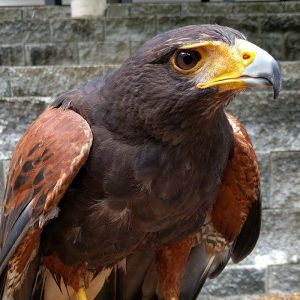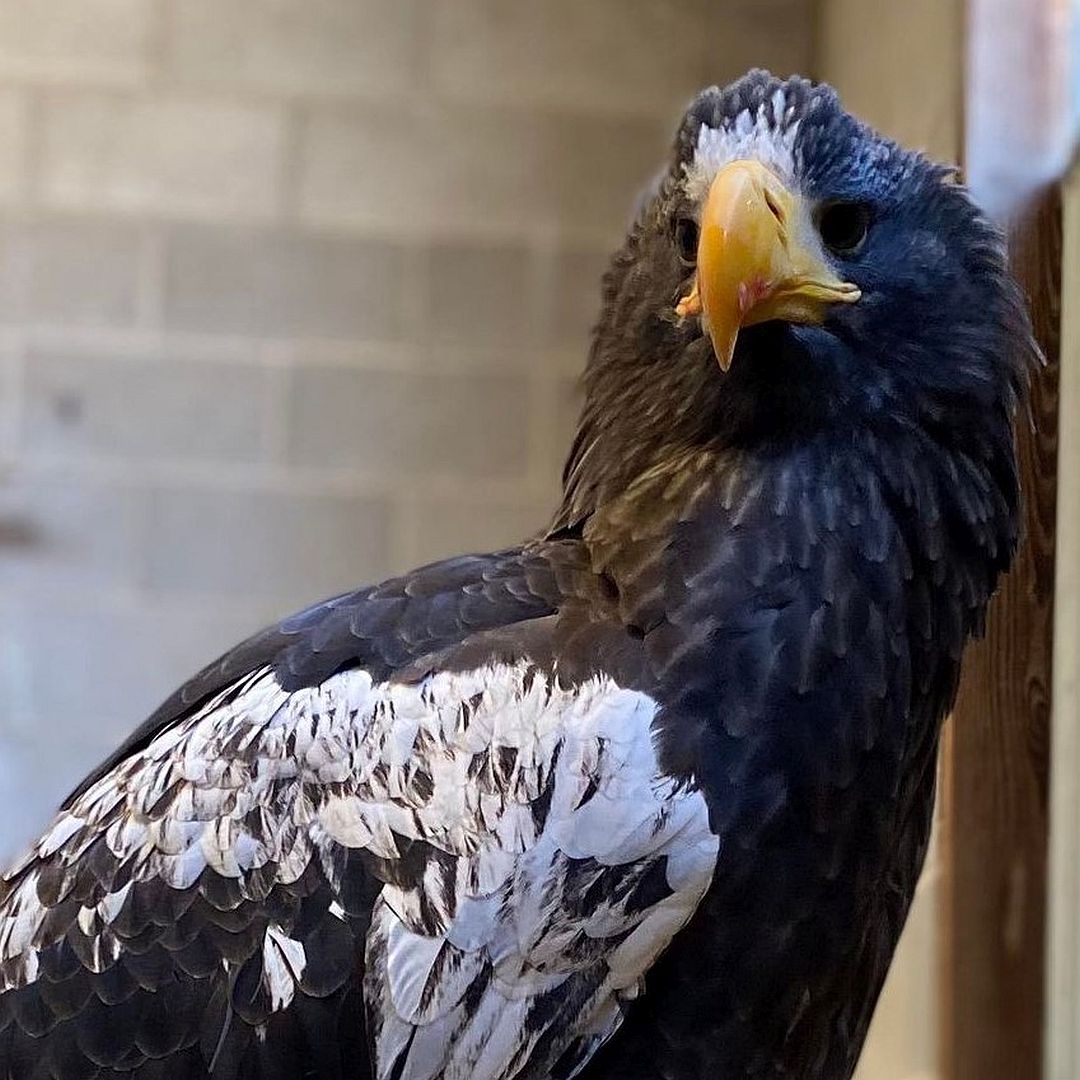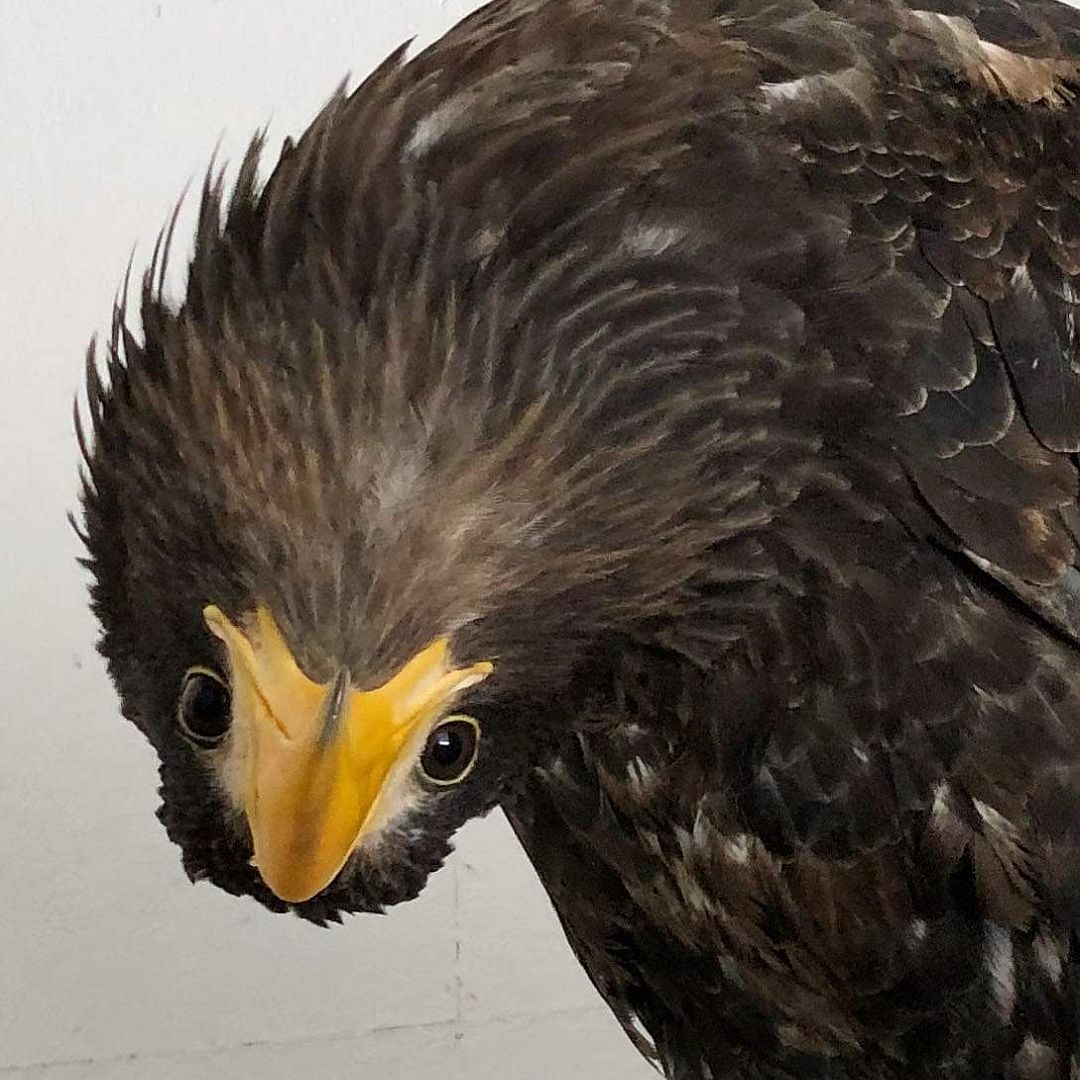Steller’s Sea Eagle – Anastasia
Anastasia was transferred to World Bird Sanctuary on April 30, 2019 all the way from the Vogelpark Avifaunain the Netherlands! Since Steller’s sea eagles are considered a vulnerable species in their native range of Russia and Japan, our goal for the future is to find a mate for Anastasia so that they can hopefully contribute to their Species Survival Plan.
$29.00 – $129.00
Description
HATCH YEAR: 2018
FUN FACTS ABOUT ANASTASIA
- Still very much a baby and learning the ropes, “Anya” is slowly transitioning to her life at WBS as an educational ambassador for her species. She definitely has her favorite trainers and feels most confident when she is with them.
- Anastasia loves to explore her exhibit and has lots of perches up high, where she feels most comfortable.
- She is currently housed off-exhibit at our Education Training Center, so that her training can progress in a non-stressful situation for her and her trainers.
SPECIES FACTS
Scientific Name:
- Haliaeetus pelagicus.
Distribution:
- Coastal northeastern Asia. Steller’s sea eagles are considered vulnerable in their native range due to pollution, overfishing, and habitat alteration. Breeding occurs on Kamchatka Peninsula (the far east in Russia); the Sea of Okhotsk, lower reaches of the Amur River and on the northern Sakhalin and Shantar Islands in Russia. The majority of birds winter south of their breeding range, in the southern Kuril Islands, Russia and Hokkaidō, Japan.
Habitat:
- Floodplain forests and river valleys near the coast. Prefers areas with large Erman’s birches, willows, alders, larches and poplar trees.
Diet:
- Almost exclusively fish like salmon, trout, Pacific cod, and Alaska pollock; will also hunt water birds, land mammals, squid, crabs, and mussels when available.
Behavior:
- Nests are built on large rocky outcroppings or in the tops of tall trees.
- Hunt mostly in shallow water, perch-hopping or sitting on a rocky ledge above the water, then diving down once prey is spotted.
- Tend to be very aggressive towards other birds of prey, they will attack a bird for a meal that they have caught and take it as their own. This behavior is especially common in large group feedings.
- Normally solitary birds, but during the summer spawning season they tend to flock in large numbers to rivers with this abundant food supply.
Identification:
- Adults have dark brown to black plumage with white on wings, legs, and tail feathers; huge, curved yellow beak and feet.
- Juveniles are mostly dark brown with brown-grey streaking throughout their feathers and white on the base of their tails; brown eyes and dark brown beak.
Additional information
| Adoption Level | Fan, Friend, Sponsor |
|---|
Related products
-

American White Pelican – Scoop
$29.00 – $129.00 Select options This product has multiple variants. The options may be chosen on the product page -

Harris’s Hawk – Blue
$29.00 – $129.00 Select options This product has multiple variants. The options may be chosen on the product page





